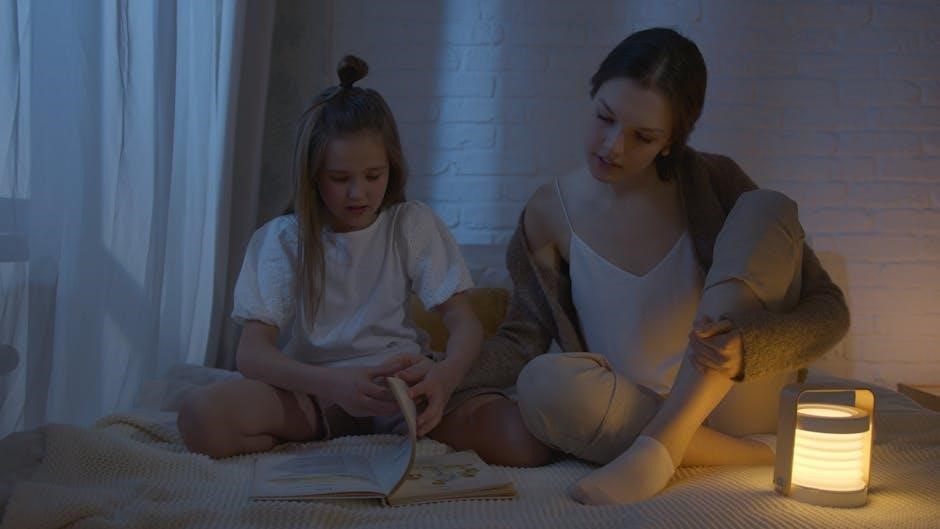The Dark Manual Book: An Article Plan
This article will dissect Colin O’Sullivan’s novel‚ initially titled “The Dark Manual” and later rebranded as “Sunny”. We will explore its characters‚ setting‚ themes‚ and genre blending‚ while also examining its critical reception and eventual adaptation into a television series.
Overview of “The Dark Manual” by Colin OSullivan
“The Dark Manual‚” later published as “Sunny‚” by Colin O’Sullivan‚ presents a unique narrative tapestry that defies simple categorization. Initially released in 2018‚ this novel explores profound themes of love‚ loss‚ and the evolving role of artificial intelligence in human lives‚ all set against the backdrop of contemporary Japan.
The story centers around Susie Sakamoto‚ an Irish woman grappling with personal tragedy in a foreign land. Her days are marked by heavy drinking and a strained relationship with her home robot‚ a constant reminder of her domestic responsibilities; O’Sullivan masterfully weaves together elements of literary fiction and noir thriller‚ creating a compelling and thought-provoking reading experience.
The novel delves into the complex relationship between humans and technology‚ particularly focusing on Asimov’s Laws of Robotics and their implications in a world increasingly reliant on AI. “The Dark Manual” is a mature and confident work‚ praised for its lyrical prose and sharp observations‚ making it a must-read for those interested in exploring the intersection of technology and the human condition.

Susie Sakamoto: The Protagonist

Susie Sakamoto‚ the central figure in Colin O’Sullivan’s “The Dark Manual” (later “Sunny”)‚ is a compelling and complex character whose struggles form the emotional core of the novel. An Irish woman living in Japan‚ Susie is portrayed as a deeply flawed individual‚ battling personal demons and grappling with profound loss.
Her days are often spent in a haze of alcohol‚ a coping mechanism for the pain she carries within. Adding to her sense of isolation is her antagonistic relationship with the home robot responsible for managing her household. This robot‚ designed to ease her burdens‚ instead becomes a symbol of her detachment from life and her inability to find solace.
Susie’s character embodies themes of displacement‚ grief‚ and the challenges of adapting to a foreign culture while wrestling with inner turmoil. O’Sullivan paints a vivid portrait of a woman on the edge‚ her interactions and decisions driving the narrative and forcing readers to confront uncomfortable truths about human vulnerability and the search for meaning in the face of adversity. Her story is one of resilience.
Setting in Japan
The choice of Japan as the setting for Colin O’Sullivan’s “The Dark Manual” (later “Sunny”) is crucial to the novel’s atmosphere and thematic resonance. The juxtaposition of Susie Sakamoto‚ an Irish woman‚ within the Japanese cultural landscape creates a sense of alienation and displacement that mirrors her internal struggles.
Japan‚ with its blend of ancient traditions and cutting-edge technology‚ provides a unique backdrop for exploring the novel’s themes. The presence of home robots‚ a common feature in Japanese society‚ highlights the increasing reliance on technology and its impact on human relationships. This futuristic element contrasts with the deep-rooted cultural values and social norms of Japan‚ further emphasizing Susie’s outsider status.
The specific locations within Japan‚ whether bustling cityscapes or serene rural landscapes‚ contribute to the overall mood of the story. O’Sullivan’s descriptions of the environment evoke a sense of both beauty and isolation‚ mirroring Susie’s own emotional state as she navigates her life in a foreign land‚ grappling with loss and searching for connection in a world that often feels distant and unfamiliar.
Themes of Love‚ Loss‚ and AI
Colin O’Sullivan’s “The Dark Manual‚” later known as “Sunny‚” delves into profound themes of love‚ loss‚ and the burgeoning role of Artificial Intelligence in human lives. The novel explores the multifaceted nature of love‚ from romantic relationships to familial bonds‚ and the devastating impact of loss on the human psyche. Susie Sakamoto’s journey is marked by both the yearning for love and the crushing weight of grief‚ shaping her interactions with the world around her.
The integration of AI‚ particularly in the form of home robots‚ introduces a complex layer to these themes. The novel questions the boundaries of human connection‚ exploring whether artificial beings can offer genuine companionship or merely serve as substitutes for human interaction. Asimov’s laws of robotics are subtly challenged‚ raising ethical dilemmas about the responsibilities we bear towards intelligent machines and the potential consequences of their presence in our lives.
Ultimately‚ “The Dark Manual” examines how love‚ loss‚ and AI intertwine to shape our understanding of what it means to be human in an increasingly technological world.
Genre Blending: Literary Novel and Noir Thriller
“The Dark Manual‚” skillfully defies easy categorization by seamlessly blending elements of a literary novel with the gripping suspense of a noir thriller. O’Sullivan crafts a narrative that is both intellectually stimulating and emotionally resonant‚ appealing to readers seeking depth and intrigue. The literary aspect shines through in the novel’s nuanced character development‚ evocative prose‚ and exploration of complex themes such as love‚ loss‚ and the impact of technology on human relationships.
At the same time‚ the novel embraces the conventions of a noir thriller‚ creating an atmosphere of mystery‚ suspense‚ and moral ambiguity. Susie Sakamoto’s struggles in Japan‚ her heavy drinking‚ her fraught relationship with the home robot all add to the dark mood. The gripping storyline keeps readers on the edge of their seats‚ eager to uncover the truth behind the secrets lurking beneath the surface.
This genre blending elevates “The Dark Manual” beyond a typical thriller‚ offering a thought-provoking and unforgettable reading experience.
Critical Reception and Awards
“The Dark Manual‚” later known as “Sunny‚” garnered significant critical attention and acclaim upon its initial release. Colin O’Sullivan’s masterful storytelling and evocative prose were lauded‚ solidifying his reputation as a compelling voice in contemporary literature. Critics praised the novel’s innovative genre blending‚ seamlessly weaving together elements of literary fiction and noir thriller. This unique approach resonated with readers seeking both intellectual stimulation and thrilling entertainment.
O’Sullivan’s ability to create complex and relatable characters‚ particularly Susie Sakamoto‚ was also widely praised. The novel’s exploration of themes such as love‚ loss‚ and the ethical implications of artificial intelligence sparked insightful discussions and further enhanced its critical standing.
Notably‚ Colin O’Sullivan’s first novel‚ “Killarney Blues‚” won the prestigious Prix Mystère de la critique in France‚ establishing him as a critically acclaimed author. While specific awards for “The Dark Manual” aren’t explicitly mentioned‚ the positive reviews and strong reader reception speak volumes about its literary merit. The transformation into a TV series further underscores the book’s lasting impact.
Publication History: From “The Dark Manual” to “Sunny”

The journey of Colin O’Sullivan’s novel from its initial conception to its current form is an interesting one. The book was first published in 2018 by Betimes Books‚ an independent press based in Dublin‚ under the title “The Dark Manual.” This original title hinted at the darker themes and complex moral questions explored within the narrative‚ particularly regarding the role of home robots and Asimov’s Laws.
Later‚ the novel underwent a title change and was re-released as “Sunny.” This shift in title suggests a potential change in marketing strategy‚ perhaps aiming for a broader audience or emphasizing different aspects of the story. While the exact reasons for the title change remain unspecified‚ it’s not uncommon for books to be rebranded to better reflect their core themes or appeal to a wider readership.
The novel’s publication history also includes its upcoming adaptation into a TV series‚ slated for release in 2024. This adaptation is a testament to the book’s enduring appeal and its potential to reach an even larger audience through a different medium.
Plot Synopsis and Gripping Storyline
“The Dark Manual‚” or “Sunny‚” centers around Susie Sakamoto‚ an Irish woman living in Japan‚ grappling with personal tragedy and a dependence on alcohol. Her life is further complicated by her fraught relationship with the home robot responsible for her domestic needs. Susie’s days are marked by a cycle of heavy drinking and resentment towards the ever-present robot‚ creating a tense and uneasy atmosphere.
The narrative takes a dramatic turn when a missile incident impacts Susie’s life in a devastating way. The gripping storyline explores themes of loss‚ grief‚ and the blurred lines between human connection and artificial intelligence. As Susie navigates her grief‚ she confronts the limitations and potential dangers of relying on technology for emotional support and companionship.
The novel’s plot is driven by Susie’s internal struggles and the external forces that challenge her perception of reality. The author’s skillful storytelling keeps readers invested in Susie’s journey.
The Role of Home Robots and Asimov’s Laws
In “The Dark Manual‚” home robots play a central role‚ not merely as futuristic appliances‚ but as integral parts of daily life‚ particularly for Susie Sakamoto. Her dependence on the robot for domestic tasks highlights a society increasingly reliant on artificial intelligence for basic needs. The novel subtly questions the implications of this reliance‚ especially when it comes to emotional well-being.
The narrative implicitly explores Asimov’s Laws of Robotics‚ which are sourly tested within the story’s context. These laws‚ designed to ensure robots’ harmlessness to humans‚ are challenged by the complex relationship between Susie and her robot. The story raises questions about the interpretation and application of these laws in situations involving grief‚ loss‚ and human vulnerability.
The novel delves into the potential consequences of imbuing robots with the responsibility of caregiving. The author uses the robot’s presence to examine the ethical dilemmas that arise when technology intersects with human emotion.
Adaptation into a TV Series

The gripping storyline and complex themes of “The Dark Manual‚” now known as “Sunny‚” have garnered significant attention‚ leading to its adaptation into a TV series. The adaptation promises to bring the novel’s thought-provoking exploration of love‚ loss‚ and artificial intelligence to a wider audience‚ magnifying the impact of Susie Sakamoto’s poignant journey.
The shift from page to screen allows for a deeper dive into the intricate world of the novel‚ expanding upon the nuanced relationships between the characters and visually representing the atmospheric setting of Japan. With a major streaming service backing the project‚ the TV series is poised to capture the essence of the original story while adding new layers of depth and intrigue.
Audiences can anticipate a faithful adaptation of the novel’s central themes‚ focusing on the ethical and emotional implications of advanced technology. The series will explore the blurred lines between human and artificial connection.
